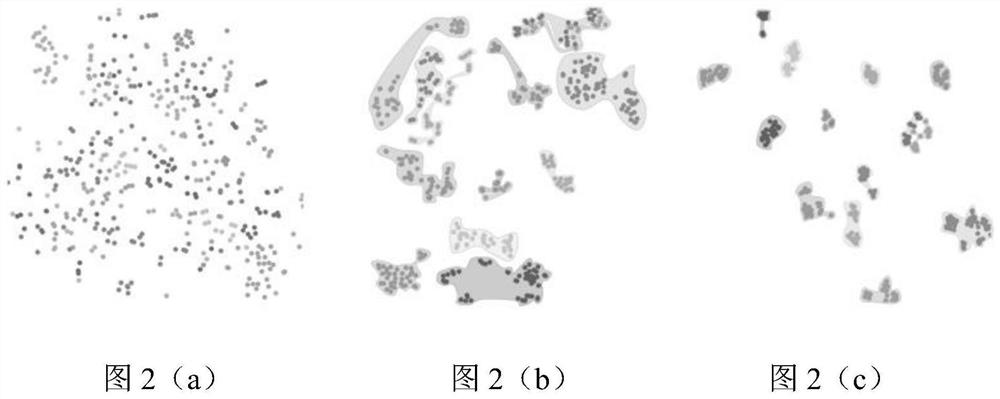Unsupervised pedestrian re-identification method based on heterogeneous graph
A pedestrian re-identification, unsupervised technology, applied in neural learning methods, character and pattern recognition, neural architecture, etc., can solve problems such as inability to directly deploy and use, without considering the complex topology of unlabeled data, and poor performance.
- Summary
- Abstract
- Description
- Claims
- Application Information
AI Technical Summary
Problems solved by technology
Method used
Image
Examples
Embodiment 1
[0055] This embodiment discloses a method for unsupervised pedestrian re-identification based on heterogeneous graphs, the method includes the following steps:
[0056] S1, obtain the camera device ID information related to the pedestrian image and the pedestrian image, and divide the pedestrian image into a training set pedestrian image and a test set pedestrian image;
[0057] S2, to the training set pedestrian image that obtains in step S1, utilize convolutional neural network model to carry out the extraction of pedestrian feature;
[0058] S3. Use each pedestrian image in the training set as a vertex, and calculate the edge between the vertex and the vertex using the pedestrian features obtained in step S2, and then perform heterogeneous screening on all the edges between the vertex and the vertex to construct a camera-related Heterogeneous graph;
[0059] S4. Propagate the heterogeneous similarity of the heterogeneous graph obtained in step S3. After the propagation is ...
Embodiment 2
[0103] The embodiment of the present invention also provides a computer storage medium, the computer storage medium stores computer-executable instructions, and the computer-executable instructions can execute the heterogeneous graph-based unsupervised pedestrian re-identification method in the first embodiment above. Wherein, the storage medium may be a magnetic disk, an optical disk, a read-only memory (Read-Only Memory, ROM), a random access memory (Random Access Memory, RAM), a flash memory (Flash Memory), a hard disk (Hard Disk) Disk Drive, abbreviation: HDD) or solid-state hard drive (Solid-State Drive, SSD), etc.; the storage medium may also include a combination of the above-mentioned types of memory.
PUM
 Login to View More
Login to View More Abstract
Description
Claims
Application Information
 Login to View More
Login to View More - R&D
- Intellectual Property
- Life Sciences
- Materials
- Tech Scout
- Unparalleled Data Quality
- Higher Quality Content
- 60% Fewer Hallucinations
Browse by: Latest US Patents, China's latest patents, Technical Efficacy Thesaurus, Application Domain, Technology Topic, Popular Technical Reports.
© 2025 PatSnap. All rights reserved.Legal|Privacy policy|Modern Slavery Act Transparency Statement|Sitemap|About US| Contact US: help@patsnap.com



